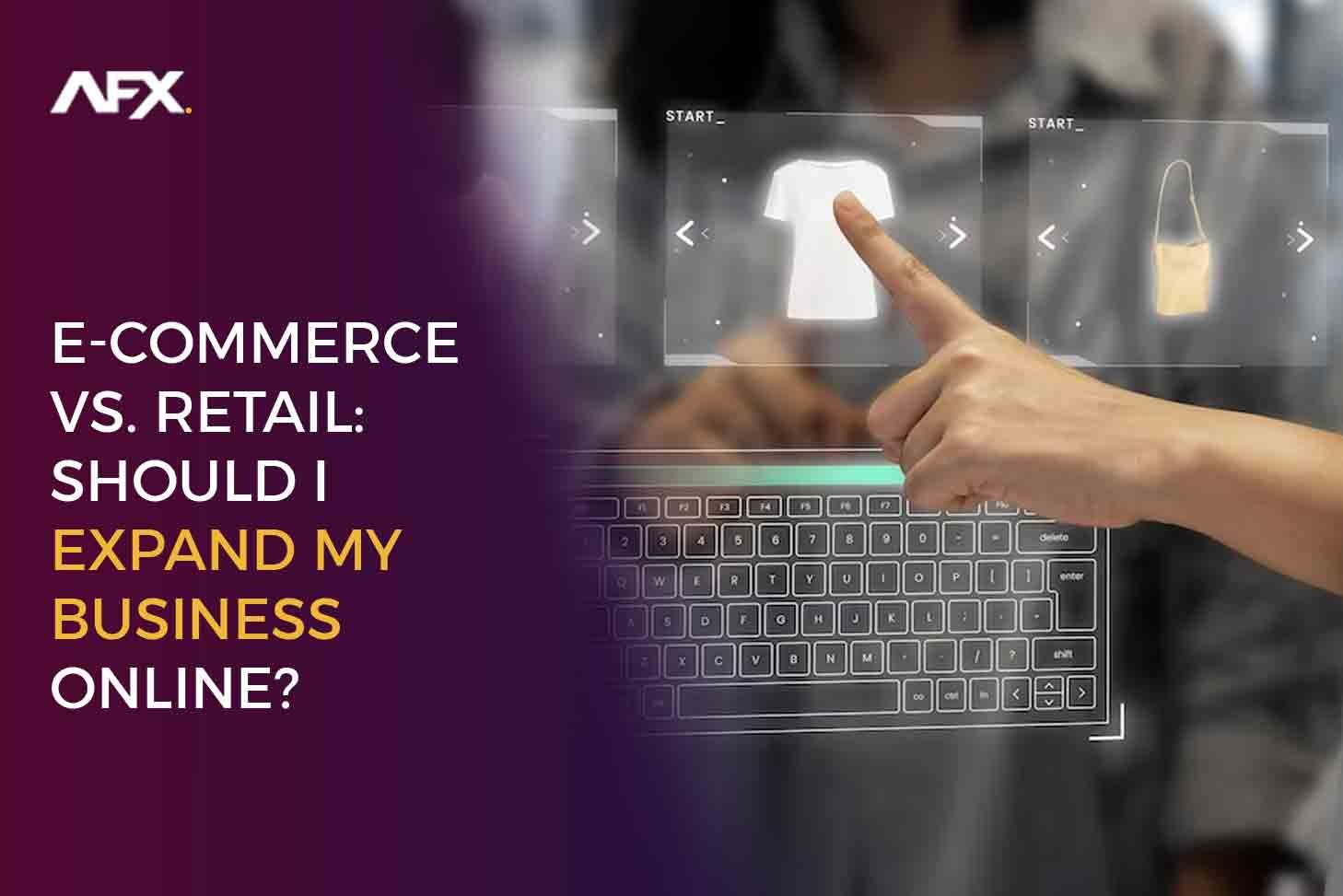- Amelia Sabestine
- 0 Comments
- 1091 Views
E-commerce sales have increased dramatically as a result of the development of digital technology, its consequent integration into customers’ daily life, and the Covid-19 pandemic.
If a customer has a reliable internet connection, they can shop online without leaving the comfort of their home with the help of e-commerce.
Are e-commerce business models therefore worthwhile?
Furthermore, if market predictions are any indication, Beeketing estimates that global e-commerce sales will reach $4.9 trillion this year alone. With no signs of slowing down, e-commerce enterprises may anticipate growth of 265%.
E-commerce will keep booming and gaining new clients as internet accessibility increases globally.
To assist you in selecting the model that will work best for your company, we compare traditional retail vs e-commerce in this article.
E-Commerce:
A firm or organization that conducts commercial transactions online is known as an e-commerce business. This means that rather than using a physical storefront or other conventional methods, they sell goods or services to clients online. Businesses engaged in e-commerce may run entirely online or they may also have a physical location. Online stores, subscription services, marketplaces on the Internet, and B2B firms that sell goods or services to other businesses are a few types of e-commerce organizations.
What is retail e-commerce? E-retail, often spelled e-tail, internet retail, or online retail, refers to the sale of electronic goods. E-retail refers to the practice of a company or individual selling goods and services to consumers online. If a customer cannot attend a physical store, an e-retail business may only have a digital presence.
What Are The 4 Types Of E-Commerce?
In general, we picture an online business transaction between a supplier and a customer when we think of e-commerce. Even yet, we may be more precise and categorize e-commerce into six main categories, each with a unique set of features.
There are four fundamental types of e-commerce.
- Business-to-Business (B2B)
- Business-to-Consumer (B2C)
- Consumer-to-Consumer (C2C)
- Consumer-to-Business (C2B)
Business To Business (B2B)
Any electronic transactions for the exchange of goods or services between businesses are referred to as business-to-business (B2B) e-commerce. This kind of electronic commerce is mainly used by producers and distributors in conventional trade.
Business To Consumer (B2C)
The development of electronic commercial interactions between businesses and customers sets the Business-to-Consumer e-commerce type apart. In e-commerce, where traditional retail trade typically takes place, it corresponds to the retail sector.
These connections may be simpler and more vibrant, but they may also be sporadic or short-lived. Due in large part to the development of the internet, there are now a large number of online stores and malls that sell a wide range of consumer items, including computers, software, books, shoes, cars, food, financial products, digital magazines, etc.
When compared to traditional commerce, online shopping typically provides the consumer with more information in the form of educational content. There is also a common belief that you can purchase items for less money while still receiving equally personalized customer service, as well as quick order processing and delivery.
Consumer-To-Consumer (C2C)
All electronic exchanges of products or services between customers are considered to be of the consumer-to-consumer (C2C) kind. The majority of the time, a third party offers the web platform via which these transactions are carried out.
Consumer-To-Business (C2B)
The typical meaning of exchanging commodities is completely reversed in a business-to-business transaction. Crowdsourcing-based ventures frequently use this kind of e-commerce. For businesses specifically looking for these kinds of services or goods, many people offer their goods or services for sale.
Examples of these activities include e-commerce website development where designers submit multiple proposals for a company logo, but only one is ultimately chosen and paid for. The marketplaces for royalty-free photos, images, media, and design elements are another platform that is quite popular in this type of trade.
What Are Examples Of E-Commerce?
Leading Online Retailers
Taobao, Alibaba, and Tmall are the biggest B2B (Alibaba.com), C2C (Taobao.com), and B2C (Tmall) marketplaces worldwide, respectively. Taobao was founded in 1999 and is China’s largest e-commerce corporation and retailer. Since 2015, their online revenue has eclipsed the total of all American shops, including Walmart, Amazon, and Opencart development.
Amazon: As the largest American e-commerce store, Amazon has significantly altered the retail landscape, making it a pressing concern for most other businesses.
Walmart: Once the leading retailer in the United States, Walmart has put a lot of effort and tremendous success into growing its online business. They now provide regular e-commerce vs retail sales and subscription services.
eBay: Being one of the original e-commerce platforms, eBay continues to rule the online marketplace by enabling both companies and private sellers to sell goods there.
Wayfair: This online retailer specializes in home furnishings but only carries a minimal amount of inventory. They oversee vendors, orders, and fulfillment, and they attribute their success to personalization, which means they pay attention to how customers interact with them and provide them with the goods they think they’ll most likely want.
Is e-commerce more profitable than retail?
In recent years, the e-commerce market has expanded at an astronomical rate. Is online selling still worthwhile in 2023, though, with the emergence of e-commerce behemoths and a fading pandemic? Yes is the answer! There are 5 crucial facts we believe you should be aware of regarding the state of the e-commerce market, regardless of whether you’re an aspiring drop shipper or a seasoned e-commerce company.
Online retail sales are anticipated to make up 21% of all worldwide retail sales in 2022, despite a sluggish global economy, unrest in Europe, and a strained supply system. Even better, by 2025, online sales are anticipated to account for 24.5% of all retail sales worldwide.
Keep in mind that brick-and-mortar stores are still operating even as e-commerce gets closer to replacing them as the transactional backbone of the retail business model.
Although internet shopping and e-commerce have become very popular alternatives, this doesn’t mean that traditional brick-and-mortar stores are no longer a good choice for customers. In actuality, there are still a lot of advantages to buying things physically, at a store, by visiting there.
Consider the following factors when selecting whether to pursue retail and e-commerce:
A Shopping Experience
A good or unsuccessful business operation can be distinguished by their shopping experiences. How easy is it to shop, buy something, and how likely are people to go back?
The use of product displays, adverts, and even demonstrations are some of the ways that merchandising, curation, and marketing methods are employed to enhance the shopping experience.
Retail: With physical retail stores, the customer experience serves as the main differentiator and is where these companies can establish themselves. Here, customers may engage directly with goods and services, giving them a hands-on look at your company’s capabilities and possibly tempting them to make a purchase.
By providing a superior purchasing experience, brick-and-mortar establishments may most effectively compete with online marketplaces.
E-commerce: As buyers cannot physically touch things through e-commerce, it might be more challenging to provide a satisfying buying experience.
To make the experience as authentic as possible, e-commerce retailers can provide a wealth of information through the use of digital marketing strategies including email marketing, product descriptions, photos, videos, and even customer reviews.
Consumer Service
Another characteristic of a successful company is its exceptional customer service, whether it be through real-time support, problem-solving for customers, or assistance with returns and other potential concerns.
Retail: Because of the nature of the business model, retail establishments can differentiate themselves through superior client relations and face-to-face encounters.
Real human interaction has many advantages that cannot be overstated. Any queries you have may typically be resolved by a real-life sales associate rather than dealing with the possible pitfalls of a chat platform or even support over the phone.
E-commerce: Despite the advantage of face-to-face engagement that retail offers, e-commerce can differentiate itself with more robust support solutions. Rather than being constrained by store hours, many e-commerce websites offer 24/7 customer service via a variety of channels, including email, social media, and live chat.
Ease
At the end of the day, many consumers are simply searching for convenience: how can the buying process be made simpler, quicker, and more successful?
Retail: When it comes to convenience, retailers are at a disadvantage. Despite this, there are still solutions that may be used to their advantage.
Retailers may greatly improve the shopping experience for customers by combining the personal touch with the assistance of sales employees and strategically placed marketing.
E-commerce: E-commerce purchasing is designed on the concept of convenience: buying anything you want, whenever you want. Businesses may simplify the purchase process to the point of a button click by offering an intuitive e-commerce website and streamlined mobile app.
Payments
You must make sure that the possible expenditures are manageable before making any important company decisions.
Retail: The majority of retail locations do not offer net banking, but they do take cards, e-wallets, and cash payments. Nonetheless, many traditional merchants still only accept cash and are adjusting to digital payment methods.
E-commerce: E-commerce systems provide adaptable payment options including credit/debit cards, e-wallets, Internet banking, and cash. After a customer’s shipment has been delivered, many e-commerce systems also enable them to make payments using their preferred payment method. Moreover, e-commerce platforms provide customers with the choice of free EMI and subscription plans, which simplifies the purchase process.
What Factors To Take Into Account When Selecting Between E-Commerce And Retail For Your Business?
In the end, business owners must weigh three factors when deciding the difference between retail and e-commerce:
Business model: Certain business models work better for retail while others work better for online shopping. So, it’s crucial to elicit information up front to make that determination: Will you be working with a distributor and wholesaler? selling without a middleman and straight to consumers? Putting your handmade goods up for sale?
Initial cost: Establishing a business can be expensive. After determining the budget, compare the overhead and other costs of leasing and operating a physical store against those of using an e-commerce platform like Shopify website development. Keep in mind that you can always scale up in the future.
Scale: While talking about scaling, take into account the size of the company and the variety of products and services it provides. You might decide to go with retail, e-commerce, or a mix of the two depending on the response. Consider this: You might open a modest online store for your handcrafted candles and sell them occasionally at neighborhood pop-up shops.
For E-Commerce To Expand, Three Developments Are Crucial:
Personalization: AI and machine learning enabled the collection of enormous amounts of data, their interpretation, and the provision of individualized shopping experiences. Loops of feedback and dynamic adaption to constantly shifting consumer behavior improve the entire customer experience.
Omnichannel: The development of social networks was made possible by the internet’s growth, which was then accelerated by mobile technology. Our regular activities now include using social media. A Google survey states that nearly 85% of consumers start their shopping trip on one gadget and finish it on another. The trend required flawless synchronization of offline and online sales platforms.
Safe payment: Electronic fund transfers that are quick and easy thanks to digital wallets have made payments simple. While PayPal was the first, numerous other mobile wallets are now available on user devices, including Apple Pay, Google Wallet, and Samsung Pay. These transactions are becoming faster and safer thanks to blockchain technology.
Related: What is Amazon SEO? A guide to ranking on Amazon with SEO
Related: E-commerce conversion rates overview: Boosts your sales and revenue
FAQs
What Are The Drawbacks Of Utilizing E-Commerce For A Developing Business?
Due to how simple it is for anyone to set up an online store, e-commerce is a very competitive industry. This is one of the main drawbacks of online shopping because it necessitates extra effort to ensure that you are promoting your store and generating traffic to your website.
What Are The Cons Of Online Shopping?
The main drawbacks of e-commerce include privacy, security, pricing wars, and complaints.
Final Words
What are the differences between e-commerce and retail? There are advantages and disadvantages to both e-commerce versus retail. In contrast, an e-commerce store is destined to succeed over a retail store since it takes less up-front investment and is ultimately more profitable due to the growing popularity of online buying. A lot of stores will relocate their sales online as a result of e-commerce, which will have a huge impact on the retail industry.










